On May 23rd, 2023, the 4th ISDE International Lectures was finished perfectly online, arousing heated discussion about the theme of “Local Earth Observation Data Cubes for the Digital Earth Vision”. Three speakers engrossed the attendees with their expertise as well as convincing and well-grounded research findings. This event revolved around the different application scenarios and case studies of the Data Cube, and presented how the Earth Observations Data Cube can be used to monitor environmental changes across countries and can enable more effective responses to problems of national and regional significance while contributing to the Digital Earth vision.
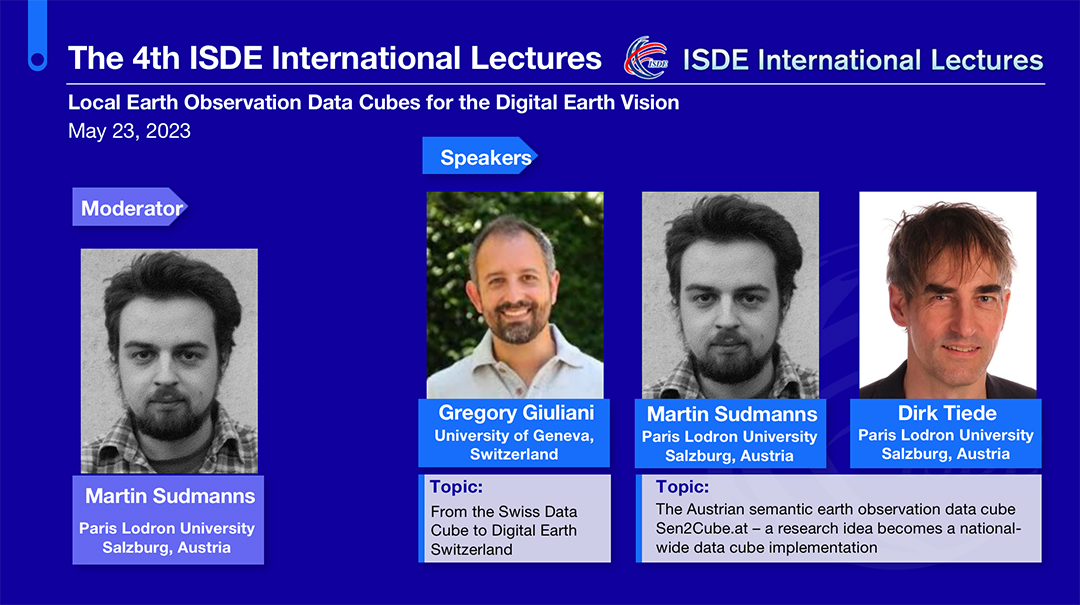
Dr. Gregory Giuliani, Senior Lecturer at the University of Geneva’s Institute for Environmental Sciences, gave a lecture on “From the Swiss Data Cube to Digital Earth Switzerland”. By taking a cartoon as a lead-in, he first stressed the increasing demand for free and open Landsat satellite data. Then he answered the question of “What are Data Cubes?” he raised in his speech. Data Cubes are something of time-series multi-dimensional (space, time, data type) stack of spatially aligned pixels used for efficient and effective access and analysis. He took much of his time to dwell on the mission, development, application and potential of the Swiss Data Cube, a project of GRID-Geneva of the United Nations Environment Programme (UNEP) and called for collaboration to expand the project.
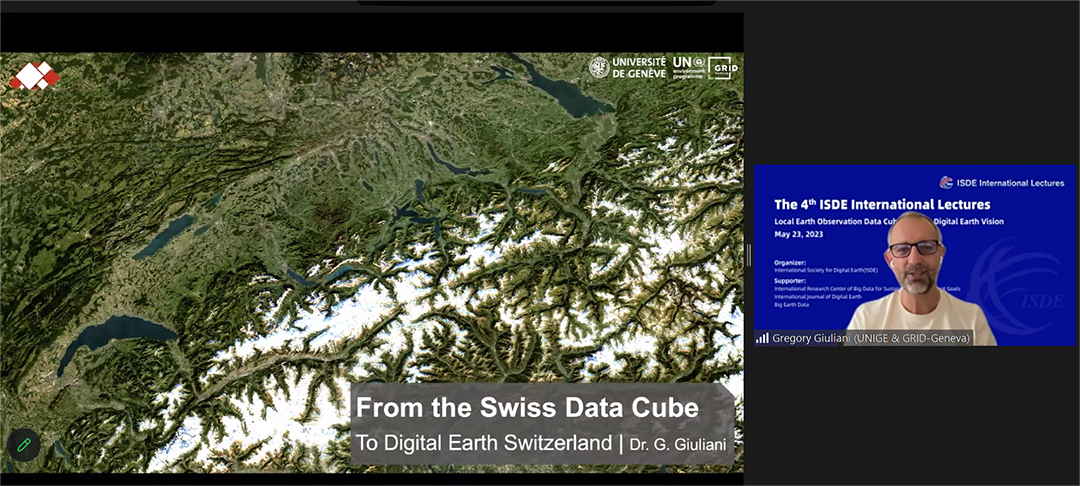
Postdoctoral Researcher Martin Sudmanns and Associate Professor Dirk Tiede are both from the Paris Lodron University Salzburg, Austria. They jointly expanded on the theme of “The Austrian semantic earth observation data cube Sen2Cube.at – a research idea becomes a national-wide data cube implementation”. In their opinions, the key to sustainable development is achieving a balance between the exploitation of natural resources for socioeconomic development and maintaining ecosystem services that are critical to humans’ well-being and livelihoods. Some of these environmental issues can be monitored using remotely sensed Earth Observations (EO) data that are increasingly available from freely and openly accessible repositories. However, the full information potential of EO data has not been yet realized. They remain still underutilized mainly because of their complexity, increasing volume, and the lack of efficient processing capabilities.
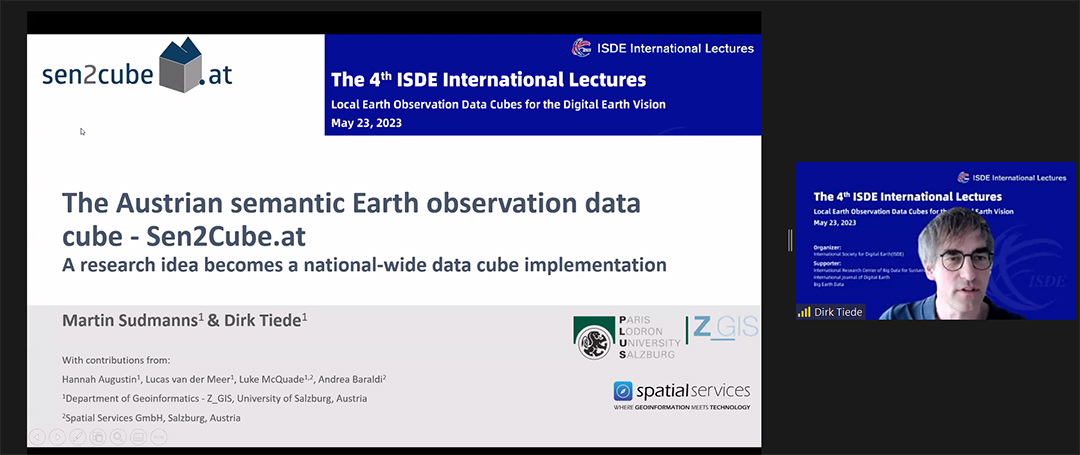
They furthermore pointed out that the Earth Observations Data Cube is a new paradigm revolutionizing the way users can interact with EO data. It lowers the barrier caused by Big Data challenges (e.g., Volume, Velocity, Variety) and provides access to large spatiotemporal data in an analysis ready format. It significantly reduces the time and scientific knowledge required to access and prepare EO data having consistent and spatially aligned calibrated surface reflectance observations.
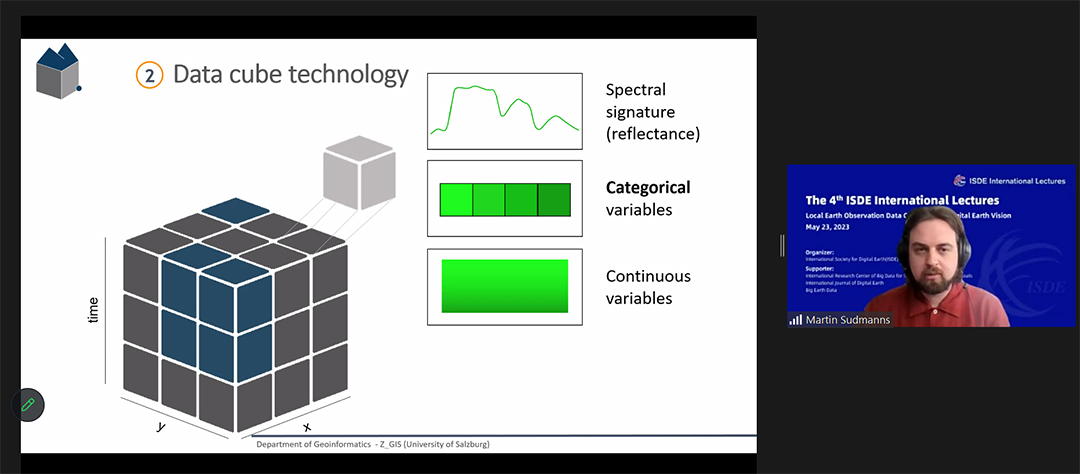
The 4th ISDE International Lectures was moderated by Dr. Martin Sudmanns. Over 3,000 participants around the world attended the 4th Lectures through Zoom, ISDE Bilibili platform and other academic streaming platforms.
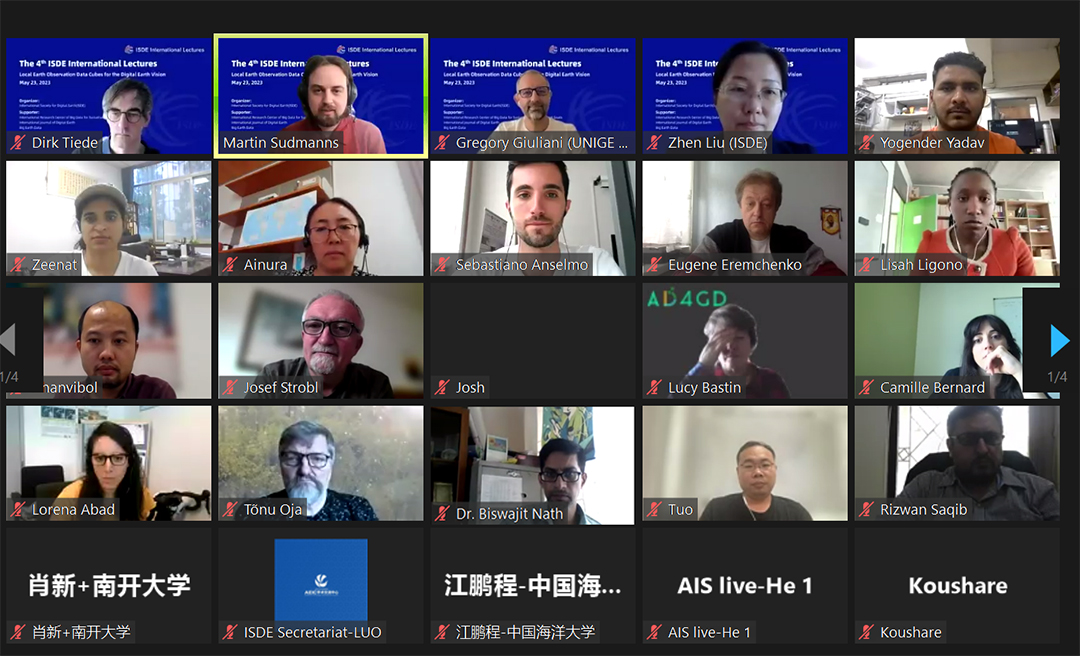
The ISDE International Lectures are organized by the International Society for Digital Earth (ISDE) and supported by the International Research Center of Big Data for Sustainable Development Goals (CBAS). It is a series of online events which feature invited lectures by well-known international experts in the field of Digital Earth. The event will invite speakers to give lectures every two months. The purpose of the events is to bring international scholars in the relevant research fields of Digital Earth together to exchange academic perspectives, share research results, and disseminate the most cutting-edge and authoritative concept of Digital Earth.

2004-2026 All Rights Reserved 京ICP备06045536号-1 京公网安备 11010802041631号